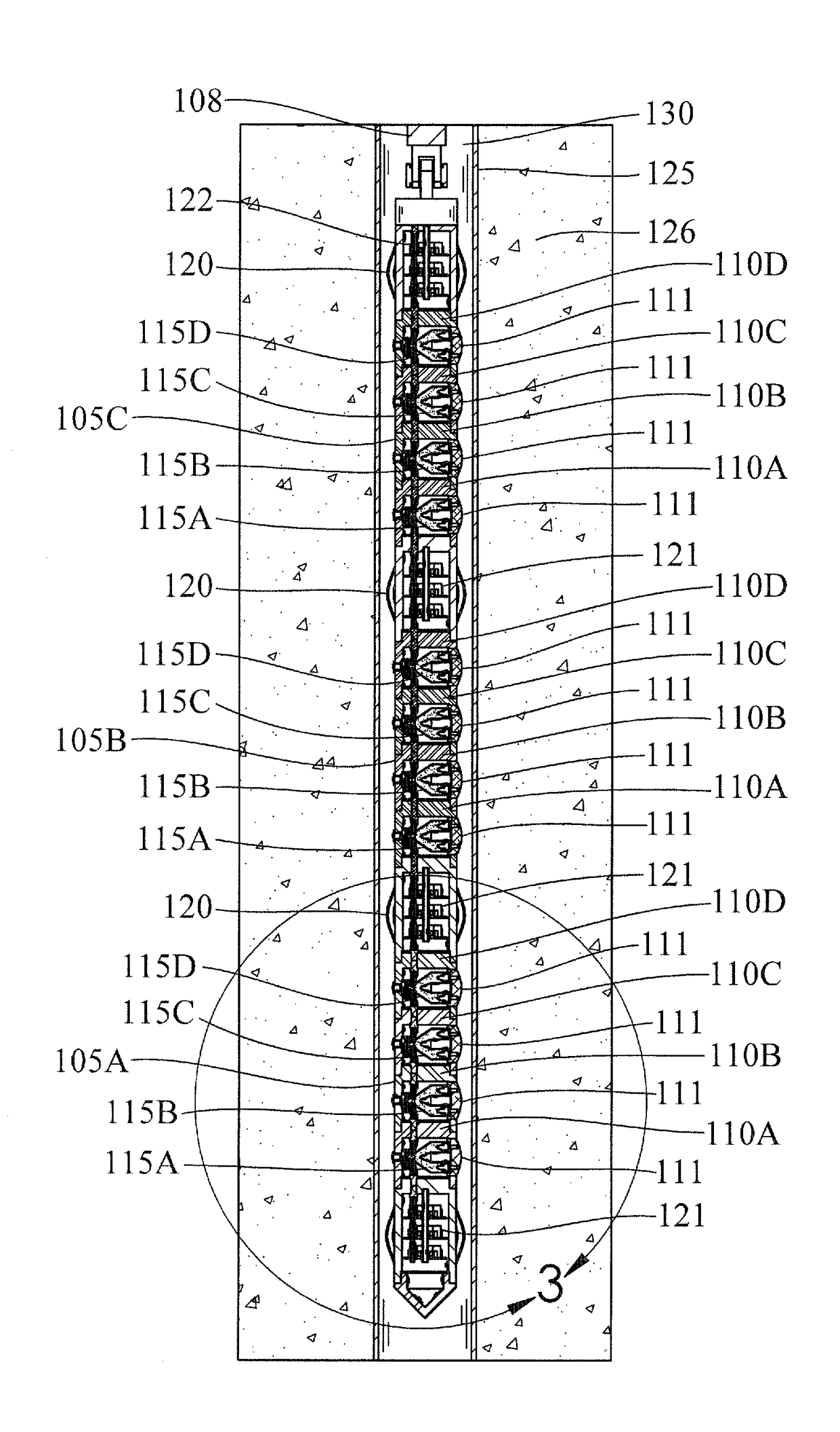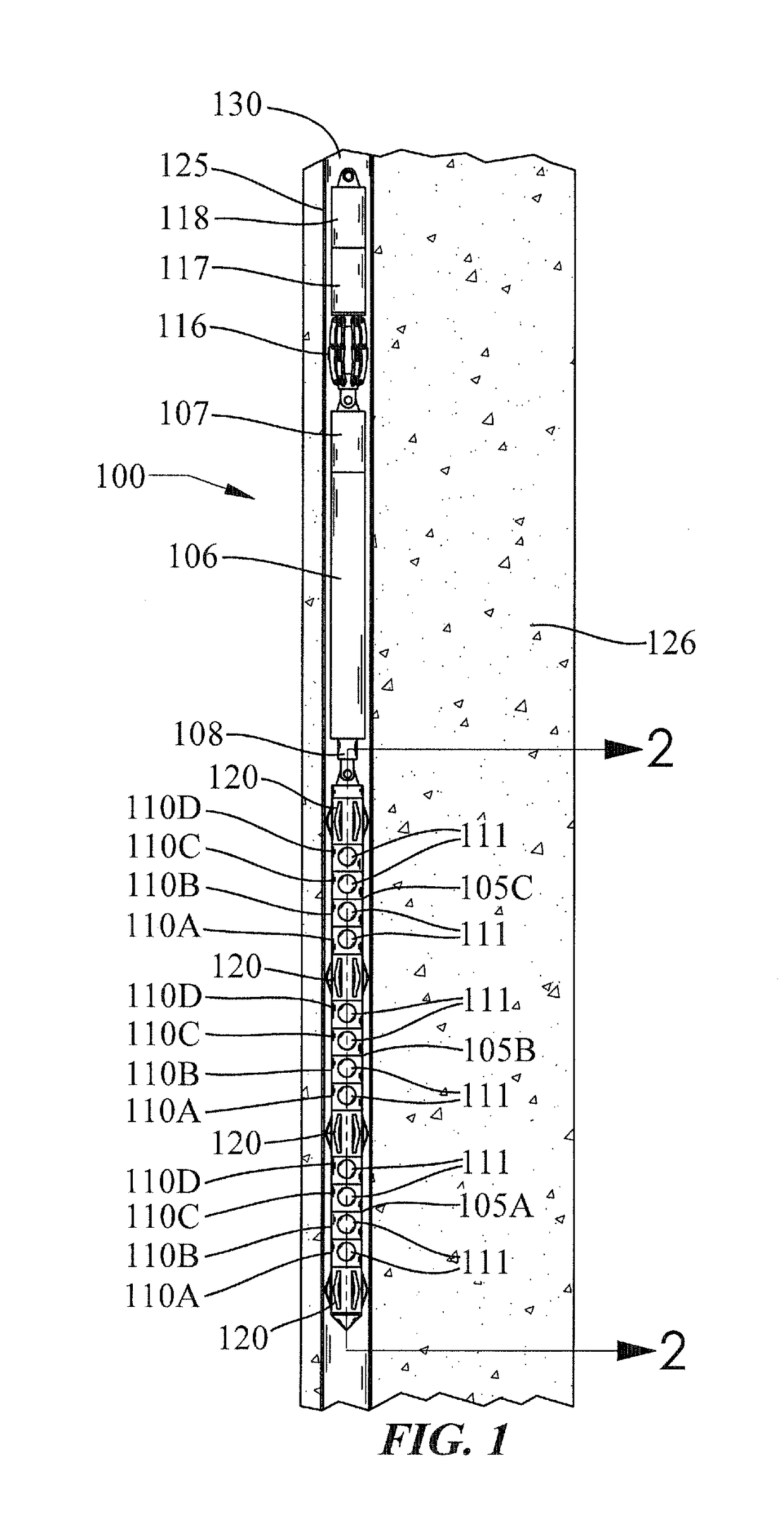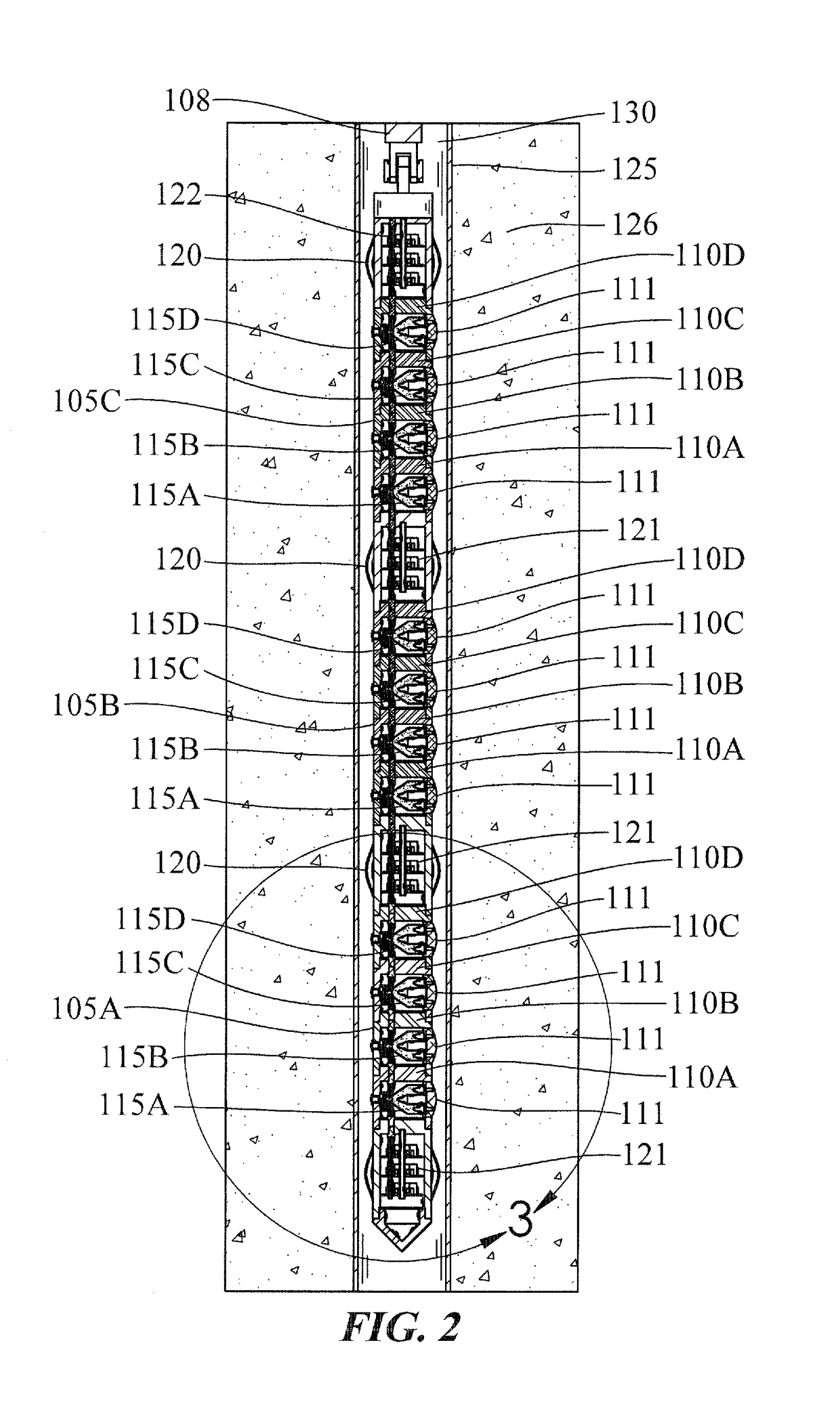Subterranean Formation Shock Fracturing Charge Delivery System
a charge delivery system and subterranean technology, applied in the direction of explosive charges, fluid removal, borehole/well accessories, etc., can solve the problems of wasting precious liner length, affecting the depth, direction and distance control, and unpredictable irregular thin sheet-like jets. achieve the effect of facilitating the depth, direction and distance control, and reducing the volume of energy resources
- Summary
- Abstract
- Description
- Claims
- Application Information
AI Technical Summary
Benefits of technology
Problems solved by technology
Method used
Image
Examples
Embodiment Construction
[0064]The present invention is a subterranean (non-hydraulic) shock fracturing system and process for fracturing oil and gas bearing formations, and the present invention delivers predetermined amounts of precisely placed explosive charges into the formation surrounding a bore hole or well casing. The present invention uses shaped charge devices in the recovery of subsurface minerals and substances, which maximizes the development, production and capture of energy resources over traditional hydraulic fracturing (HF) techniques. The present invention achieves those objectives by controlling the direction and distance of charge detonation around the well bore or well casing.
[0065]FIG. 1 depicts the present invention, which can be called a Select Fire Gun System (SFGS) 100, is shown prior to explosive charge initiation in a subterranean formation 126 inside a well borehole 130 and a well casing 125. The explosive charges in the present invention SFGS system consists of three primary se...
PUM
| Property | Measurement | Unit |
|---|---|---|
| velocity | aaaaa | aaaaa |
| diameter | aaaaa | aaaaa |
| diameter | aaaaa | aaaaa |
Abstract
Description
Claims
Application Information
 Login to View More
Login to View More - R&D
- Intellectual Property
- Life Sciences
- Materials
- Tech Scout
- Unparalleled Data Quality
- Higher Quality Content
- 60% Fewer Hallucinations
Browse by: Latest US Patents, China's latest patents, Technical Efficacy Thesaurus, Application Domain, Technology Topic, Popular Technical Reports.
© 2025 PatSnap. All rights reserved.Legal|Privacy policy|Modern Slavery Act Transparency Statement|Sitemap|About US| Contact US: help@patsnap.com



